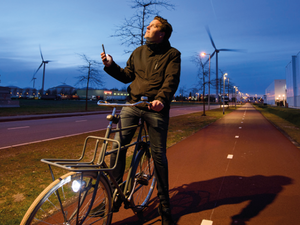Digital mania is sweeping through European city regions
Encouraged by the EU, almost all of Europe’s large cities have undertaken strategies in favor of Smart Cities. In addition to meeting urban planning and ecological concerns, these programs have become economic development tools, but also sources of competition between metropolitan areas.
In 2010, the member states of the European Union adopted the Europe 2020 strategy aimed at better coordinating their economic and social policies. This strategy included a commitment to foster the development of digital cities and to invest in information and communication technology infrastructures. The purpose of this was to create a digital, sustainable and inclusive economy by investing 3% of Europe’s GDP in research and development and in innovation. Many of Europe’s cities took up the challenge immediately. By 20111, over 240 cities of over 100,000 inhabitants had already drawn up and planned actions in favour of digital cities (43% of cities of between 100,000 and 200,000 inhabitants and 90% of metropolitan areas with over 500,000 inhabitants). Around half of these initiatives were being led and implemented, most of them in the fields of environment protection, mobility and e-governance.
To date, the European cities of Amsterdam, Barcelona, Copenhagen, Helsinki, Manchester and Vienna seem to have been the best in terms of achieving their urban development objectives. The factors of success depend on the real involvement of citizens, elected officials and local economic agents in the dissemination of best practices at all levels of society. Within a few years, Amsterdam has become one of Europe’s most innovative cities. The municipality’s definition of a Smart City is: “a city whose social, infrastructural and technological solutions enhance and accelerate its sustainable economic development”. Thus, as early as in 2009, it launched the Amsterdam Smart City initiative. A digital platform2 connects people and communities, who can thus share their expertise, accelerate their project implementation and face the challenges of their city’s urban development. To date, Amsterdam Smart City has supported over 80 pilot projects, such as: bike paths, bus lanes, shorter garbage truck routes, parking payments by mobile phone, Smart Citizens Lab, City-zen (smart-grid), City Alerts, open data, etc. Amsterdam has also invested in developing co-working spaces close to residential areas (network of des “smart work centres”, which reduced traffic jams by 20% between 2008 and 2013, according to the municipality.
The impact of digital cities in Europe has gone beyond the provision of urban services and become a driver of economic and social development
Barcelona has also developed a digital platform3. In 2015, the city set up a special team called ‘Smart City Barcelona’ to integrate innovative projects and identify new opportunities to improve urban services in 12 areas of intervention (transport, water, energy, waste, open data, etc.). It initiated 22 programmes made up of 83 projects: parking spaces, bike sharing, digital bus-stops, smart public lighting, smart management of public parks... The city is connected by a large fiber-optic network that links up 90% of homes, thereby allowing the city to communicate directly with the inhabitants. The data are made available in the form of open data, thereby strengthening the relationship between citizens and the municipality. Moreover, the 22@Barcelona project has enabled Barcelona to position itself as the European leader in centres of innovation in competition with Sao Paulo, Seoul and London. This has favoured the production of innovations related to urban development goals. Thanks to the digital city model, Barcelona has cut its consumption levels, increased its revenues and has reportedly created 47,000 jobs.
The impact of digital cities in Europe has gone beyond the provision of urban services and become a driver of economic and social development. The interactions generated by new sharing tools (digital platforms) have paved the way for the emergence of innovative collaborative projects, thereby facilitating direct relations between citizens and elected city officials and the dissemination of innovative solutions at local, national and international levels.
Éric Huybrechts, architect-urbanist, L'Institut Paris Region
1. EU “Directorate General for internal policies”, Mapping smart cities in the EU, Brussels, 2014.
This page is linked to the following category :
Economy
